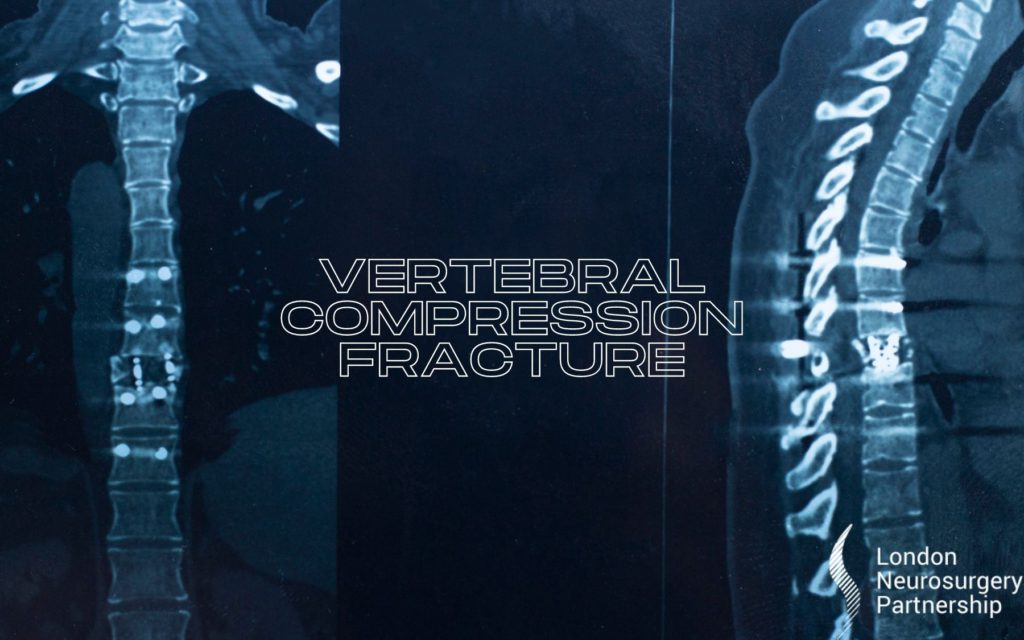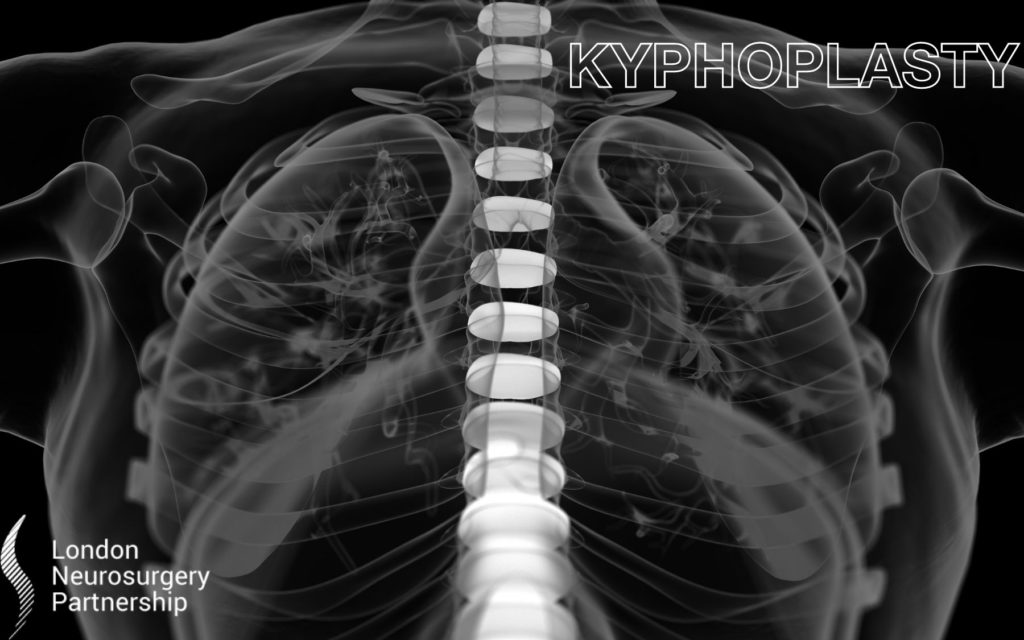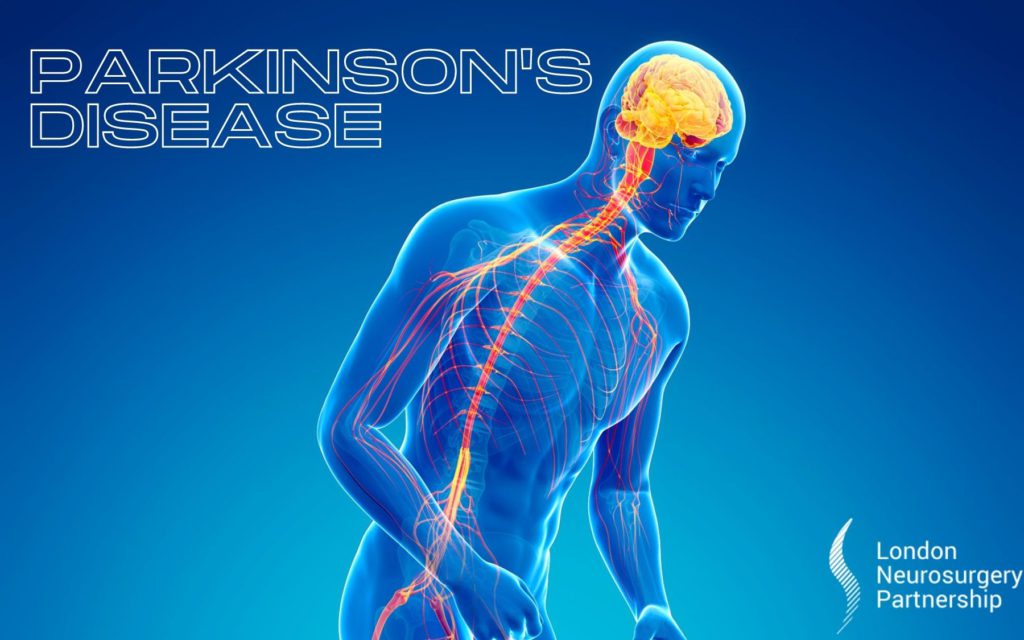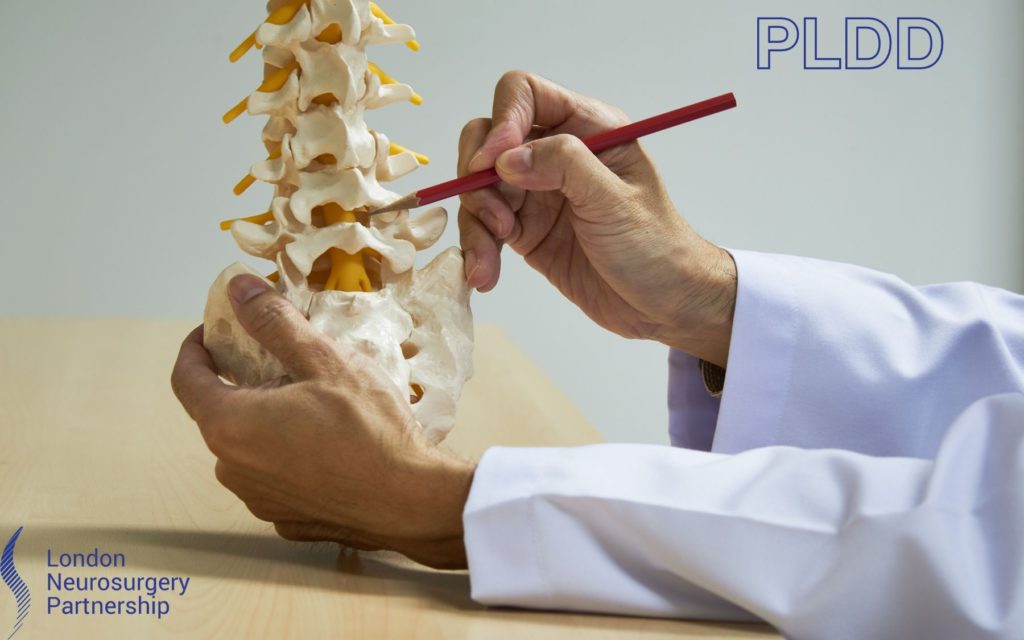
This week we explain all about what a vertebral compression fracture is, who gets them and how to go about treating them.
A vertebral compression fracture occurs when the weight bearing, block-like part of the vertebra (spine bone) becomes compressed or squashed. These occur most commonly in the lumbar (lower spine) but can happen anywhere in the spine.
How do we get vertebral compression fractures?
There are three possible causes of a vertebral compression fracture:
- Osteoporotic: Osteoporosis is a disease of the bone causing reduced bone density. This may increase the chance of sustaining a vertebral compression fracture without trauma. The risk of osteoporosis and therefore vertebral compression fractures increases in women post-menopause.
- Trauma: Usually the force needed to cause a vertebral compression fracture is fairly high. These often occur as a result of a fall from a height, landing feet first or road traffic accidents.
- Pathological: Fractures occur as a result of pre-existing disease such as metastatic cancer but also other conditions such as osteomyelitis (infection of the bone) or Paget’s disease.
How do you know if you have a vertebral compression fracture?
There are a few possible symptoms of vertebral compression fractures which can include:
- Pain – especially in the lower back.
- Numbness, tingling and weakness – this can occur if the bony fragments from the fracture cause compression of the nerves at the fracture level.
- Incontinence or urinary retention – this can occur if fracture fragments press on the spinal cord.
Vertebral compression fractures are diagnosed through imaging of the spine to look at the bones which may include and x-ray, CT scan or MRI scan.
How are vertebral compression fractures treated?
There are several treatment options for vertebral compression fractures:
- Back brace
- Rest and ice
- Pain relief – including non-steroidal anti-inflammatories, muscle relaxants
- Exercise – when signed off by the doctor to prevent further osteoporosis and strengthen the muscles in the back.
If the conservative treatments do not have the desired effect or the fracture is causing neural problems there are surgical options.
- Kyphoplasty: A kyphoplasty is a minimally invasive procedure which aims to reduce or stop the pain caused by micro-movement in vertebrae often linked to a fracture. During a kyphoplasty the spine is accessed from the back via a small keyhole incision through with the surgeon passes a narrow tube. Positioning of the tube is confirmed and guided by x-ray images. The tube creates a pathway from the skin to the damaged vertebral body via the pedicle (part of the vertebra linking the front to the back). The surgeon inserts a special balloon through the tube into the vertebra and gently inflates it. As the balloon inflates it compacts the soft bone to create a void inside the vertebra. It may also partially restore the height of the vertebral body. The surgeon removes the balloon and injects a cement-like material into the void via the tube. The cement-like material (polymethylmethacrylate) hardens quickly once injected to stabilise the bone.
- Vertebroplasty: A vertebroplasty is a minimally invasive procedure which aims to reduce or stop the pain caused by micro-movement in vertebrae often linked to a fracture. During a vertebroplasty the spine is accessed from the back via a small keyhole incision through with the surgeon passes a narrow tube. Positioning of the tube is confirmed and guided by x-ray images. The tube creates a pathway from the skin to the damaged vertebral body via the pedicle (part of the vertebra linking the front to the back). The surgeon removes the balloon and injects a cement-like material into the void via the tube. The cement-like material (polymethylmethacrylate) hardens quickly once injected to stabilise the bone.
- Decompression to relieve pressure on the spinal cord by removing some bone from the back of the spine.
How to prevent vertebral compression fractures?
Many vertebral compression fractures are a result of osteoporosis therefore if the osteoporosis is prevented the risk of fracture is also reduced. So, how do we go about this?
- Balanced diet with plenty of Calcium and vitamin D
- Exercise particularly weight bearing exercise to help keep bone strength high
- Quit smoking
This article is intended to inform and give insight but not treat, diagnose or replace the advice of a doctor. Always seek medical advice with any questions regarding a medical condition.
Back to spinal conditions.





0 Comments